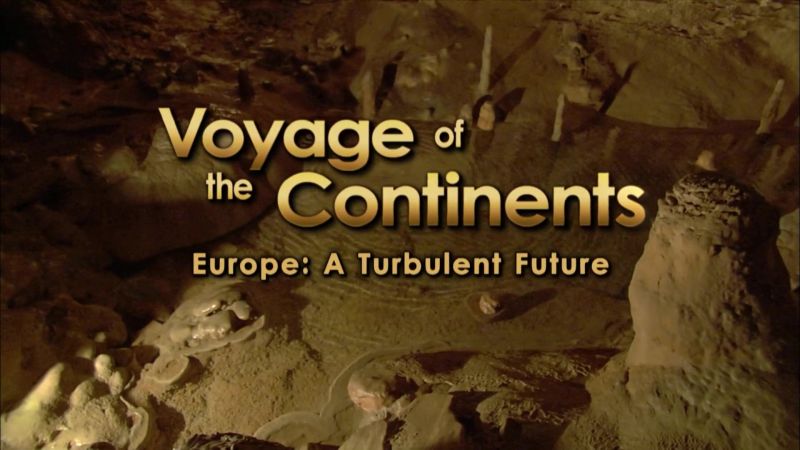Voyage of the Continents episode 5: Europe grew out of three massive collisions with what became America, Asia and Africa. But although the continent has been assembled, it is still changing. Tectonic forces continue to transform Europe. Iceland is cracking apart at the seams, releasing geysers of steam and mountains of volcanic ash. The Alps are still rising and the Mediterranean may be drying up. Scientists working in the field will provide us with an understanding of the history of our Earth, and its majestic and destructive phenomena. The birth of the Alps, the disappearance of the Mediterranean, outstanding underground areas, and imminent earthquakes are only some of the forms brought about as a result of the ceaseless Voyage of the Continents. In this episode we look into the future of the Earth’s most intriguing continent.
Over the many billions of years of Earth’s history, our planet has never stopped changing. Massive tectonic forces have sculpted and resculpted our world in a never-ending journey. Do you know that Scandinavia was once in the southern hemisphere? And that in the Ardennes we can find coral reefs like in the Bahamas? Or that the largest ocean in the world, the Pacific is endangered? Since its formation 4.6 billion years ago, our Earth has been subjected to forces of incredible power. Around a still hot core, the earth’s crust, driven by mantle convection movements, is in perpetual evolution, tirelessly redrawing the map of the continents and oceans.
As landmasses assemble and separate, they fuel volcanoes and spark earthquakes, building mountains and tearing valleys. They come together or separate on average by a few millimeters or centimeters per year, sometimes more. On the scale of geological time, they shape the reliefs and deep architecture of the continents. We see the Earth, eons in the making, through the eyes of geologists and other scientists.
The history of these continents is part of a “tectonic waltz” of land and sea, a concept as important for the history of the Earth as Darwin’s theory of species for the evolution of Man. Tectonics have created life– and destroyed it as well. Huge volcanoes and devastating earthquakes continue to dominate human history. This is a story of high drama and intense beauty, the interaction of geology and life. A true Voyage of the Continents.
Voyage of the Continents episode 5
Europe’s geological history is a fascinating topic that spans millions of years. It is a story of tectonic plates colliding and separating, mountains rising and falling, and oceans forming and disappearing. The geological history of Europe has played a significant role in shaping the continent’s topography, climate, and natural resources.
The European continent is part of the larger Eurasian landmass and sits on several tectonic plates, including the Eurasian, African, and Arabian plates. The movement and collision of these plates have created numerous geological features such as mountain ranges, volcanoes, and rift valleys. For instance, the Alps, which run through France, Italy, Switzerland, and Austria, were formed by the collision of the African and Eurasian plates.
The geological history of Europe is also characterized by several ice ages, the most recent of which occurred about 20,000 years ago. During this period, much of northern Europe was covered by ice sheets, and sea levels were much lower than they are today. As the ice sheets retreated, they carved out numerous valleys and lakes, leaving behind a unique landscape.
Europe’s geological history has also been shaped by the numerous rivers that flow across the continent. The Danube, the Rhine, and the Volga are among the largest rivers in Europe, and they have played a vital role in shaping the continent’s landscape. The rivers have eroded the land, creating valleys and gorges, and deposited sediment, forming fertile plains. The geological history of Europe has had a significant impact on the continent’s natural resources. Europe is home to numerous mineral deposits, including coal, iron ore, and copper. These resources have played a critical role in the continent’s industrial development. Europe is also home to significant reserves of oil and natural gas, which are essential to its energy needs.
Europe’s geological history is a rich and complex story that has shaped the continent’s topography, climate, and natural resources. The collision of tectonic plates, the movement of glaciers, and the flow of rivers have all contributed to the continent’s unique and diverse landscape. Understanding Europe’s geological history is essential for appreciating its natural beauty and the challenges that its inhabitants face.




